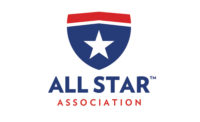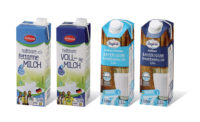Case study
Growth begets growth
Stanpac upgraded to the latest decorating technology to support the rapid rise in its decorated glass milk bottle business, which also helped to further more growth.

The story of Stanpac, Smithville, Ontario, is a good example of how growth begets growth. Stanpac started manufacturing closures for glass milk bottles in 1949 and since then has continually grown its dairy packaging business by expanding with new products and innovations for the ice cream and milk markets. Today its product portfolio includes dairy packaging, refillable glass milk bottles, bottle closures, ice cream packaging and ice cream filling equipment. It also takes advantage of its decorating capabilities by producing ceramic and UV decorating for the wine, liquor and beer bottle markets. The following is an examination of how Stanpac continues to grow and thrive.
A capacity challenge
With the increased demand for environmentally sound packaging and the heightened awareness of the benefits of organic products, Stanpac experienced a rapid rise in its decorated glass milk bottle business. As a result, its older decorating machines did not have enough capacity to keep up with the demand. The mechanical machines took a long time to change over from job to job and required a large investment in tooling.
“Firstly, we had to find a way to pump out more dairy bottles,” said to Cam Simmons, general manager, Stanpac INK. “And at the same time, we wanted to take advantage of our location in one of Canada’s principal wine and beer producing areas and the exploding demand for artisanal wine, beer and spirits. A beautifully decorated bottle is a major element in marketing these beverages.”
A capable solution
Based on its positive track record with Kammann equipment, Stanpac turned to KBA-Kammann, Bad Oeynhausen, Germany, for the latest decorating technology. In 2013 Stanpac installed a five-color K15 CNC-M18 fully automatic, CNC controlled, universal screen printing machine with UV drying and a K31 A glass pre-treatment unit.
“The new machine met all of our goals. It put out a lot more bottles per hour while handling a wider range of complex images. Both our dairy and non-dairy business grew,” said Simmons. “Interestingly, it got us out of our comfort zones in terms of the type of work we do. The old mechanical machine forced us to make all sorts of rules about what artwork we could accept.
“The K15 also made it easier to decorate one of our most challenging jobs — the ½ gallon jugs. It’s a big and bulky piece of glass with peaks and valleys which challenged the old mechanical machine. The new machine’s CNC capabilities helped eliminate these problems along with generating a lot more throughput,” he added.
Stanpac quickly discovered, however, that it would need additional capacity a lot sooner than its original five-year forecast. Its business grew so fast that it needed a new machine to handle all of the milk bottle demand. The decision to purchase a second KBA-Kammann K15 was easy to make.
In February 2016, Stanpac ordered a four-color KBA-Kammann K15-CNC S8 screen printing machine equipped with direct screen heaters, bottom register camera, seam register camera and print-check system.
“KBA-Kammann’s sales and support staff executes and delivers. We get support in real time. Even when issues arise in off hours, someone is always available to answer questions and resolve issues,” Simmons said. “Secondly, our operators were now trained in the new system so it made sense to keep on the same track. As we became more and more familiar with the system, our changeover times continued to improve.”
Looking for a reprint of this article?
From high-res PDFs to custom plaques, order your copy today!





